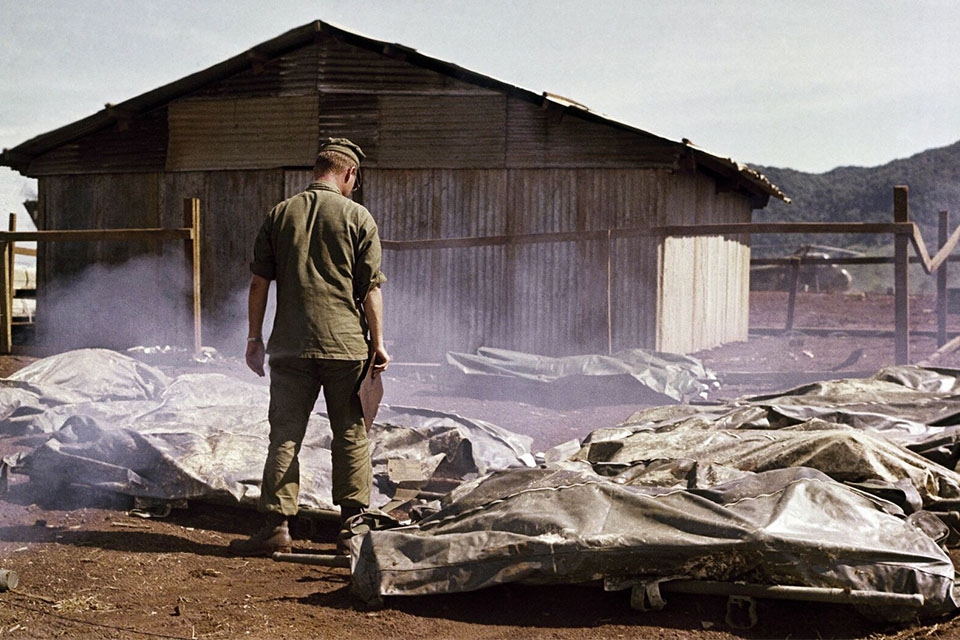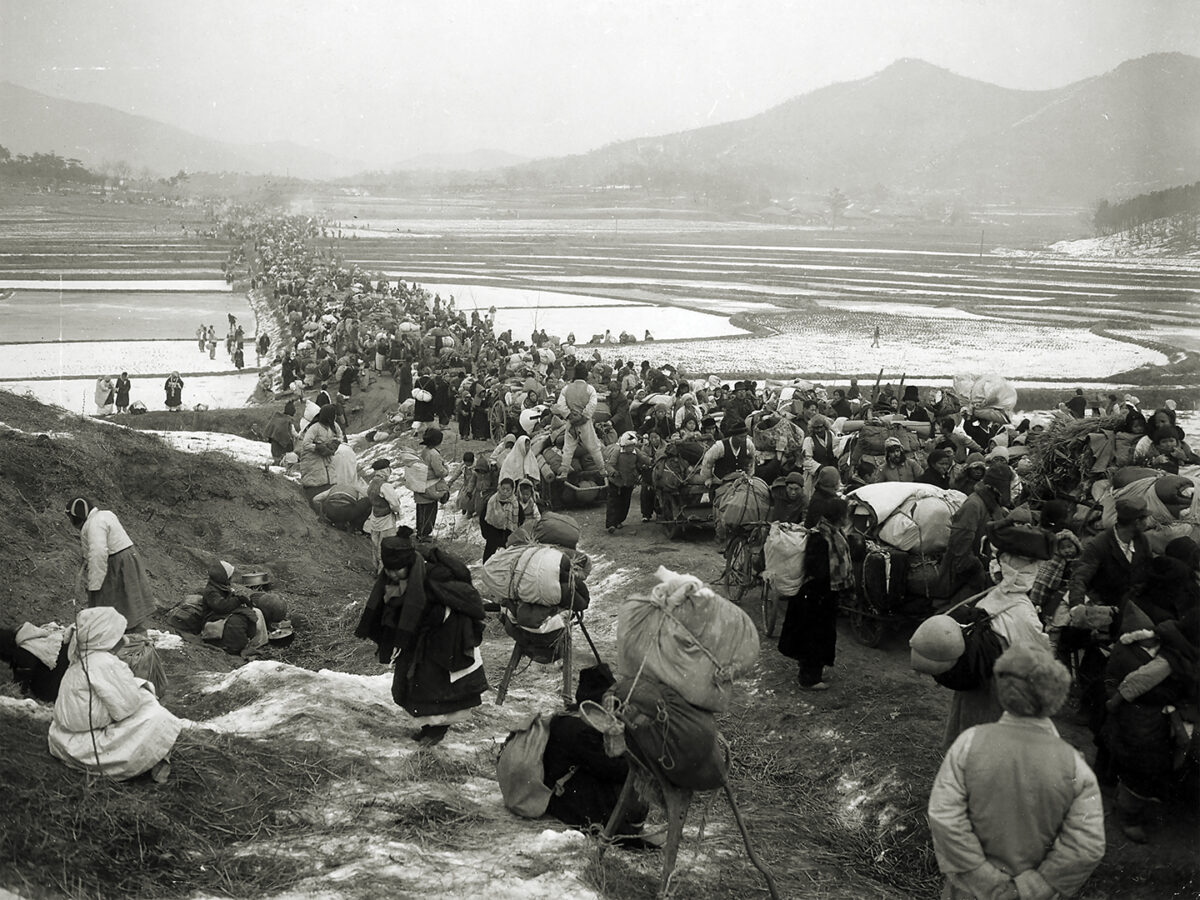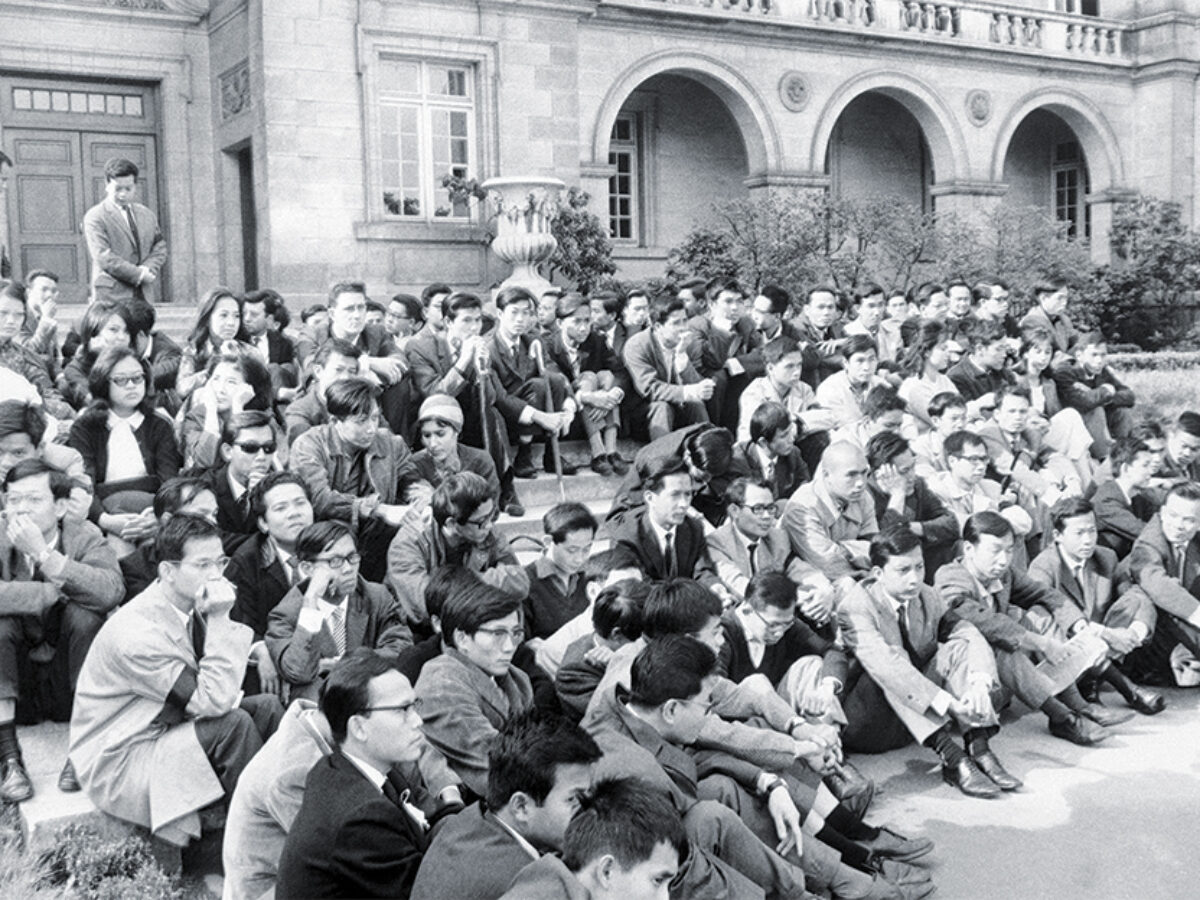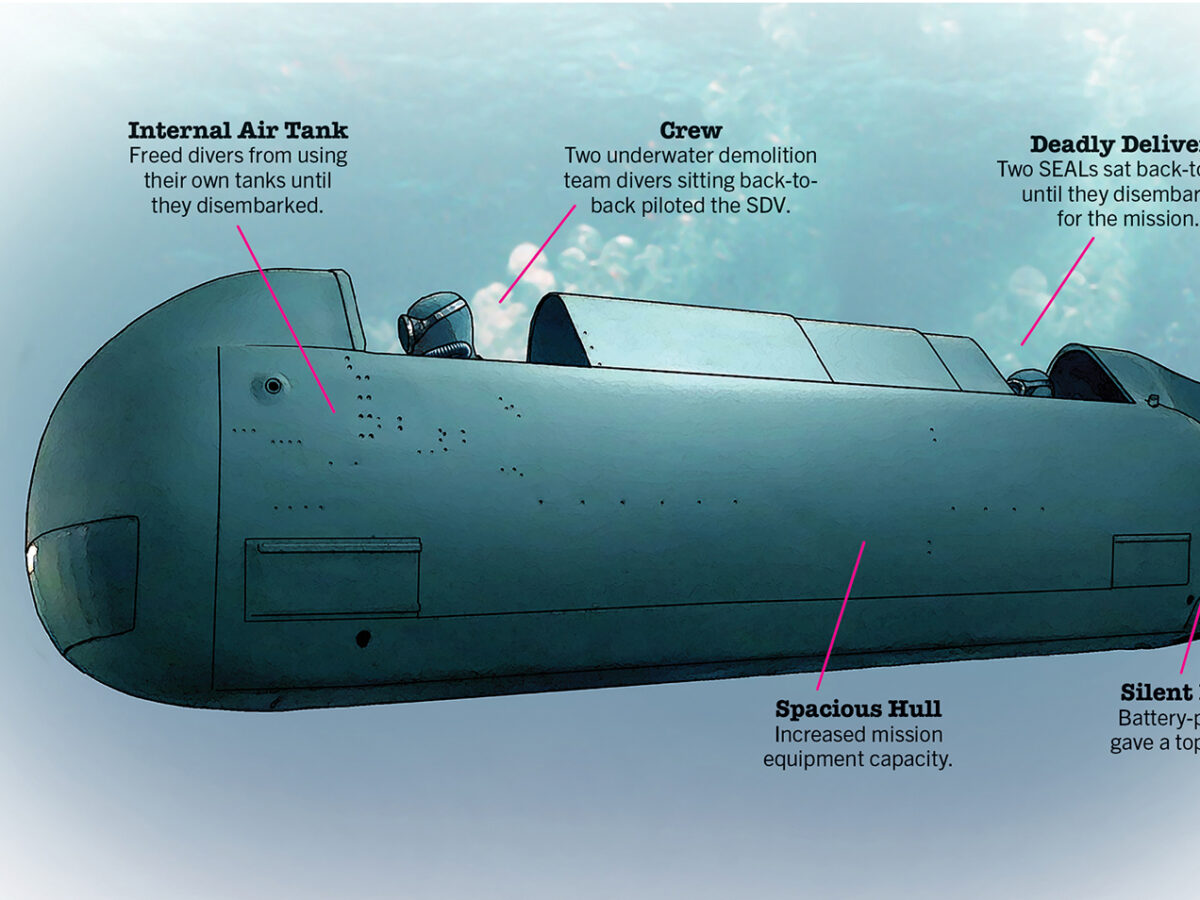The 1968 Battle of Khe Sanh was the longest, deadliest and most controversial of the Vietnam War, pitting the U.S. Marines and their allies against the North Vietnamese Army. Both sides have published official histories of the battle, and while these histories agree the fighting took place at Khe Sanh, they disagree on virtually every other aspect of it.
In an unconventional war without conventional frontlines, statistics became the most critical measure of progress. The most controversial statistic in Vietnam was the number of killed in action (KIA) claimed by each side. If a battle tallied a sufficiently favorable body count ratio, American commanders declared victory, as they did after Khe Sanh. A closer look at the Khe Sanh body count, however, reveals anything but a straightforward matter of numbers.
Battle of Khe sanh facts
Khe Sanh is a village located near the Laotian border and just south of the Demilitarized Zone (DMZ) that separated North and South Vietnam. As early as 1962, the U.S. Military Command–Vietnam (MACV) established an Army Special Forces camp near the village. The Americans wanted a military presence there to block the infiltration of enemy forces from Laos, to provide a base for launching patrols into Laos to monitor the Ho Chi Minh Trail, and to serve as a western anchor for defense along the DMZ.
Recommended for you
In 1966 the Marines built a base adjacent to the Army position, and organized their combat activities around named operations. By early 1967, the Marine position was reinforced to regimental strength. On April 20, Operation Prairie IV began, with heavy fighting between the Marines and NVA forces. The next operations were named Crockett and Ardmore.
Beginning in October 1967, the Communists greatly increased their forces in the Khe Sanh area to total two infantry divisions, two artillery regiments and an armored regiment. These forces, including support troops, totaled 20,000 to 30,000. The Marine garrison was also reinforced, and on November 1, 1967, Operation Scotland began. The Marine Corps casualty reporting system was based on named operations and not geographic location. Consequently, and unknown at the time, Operation Scotland became the starting point of the Battle of Khe Sanh in terms of Marine casualty reporting.
By the middle of January 1968, some 6,000 Marines and Army troops occupied the Khe Sanh Combat Base and its surrounding positions. Khe Sanh was situated on Route 9, the major east-west highway. Because of washed-out bridges and heavy enemy activity, however, the only way for Americans to get to Khe Sanh was by helicopter or airplane.
the nva attack khe sanh combat base
During the darkness of January 20-21, the NVA launched a series of coordinated attacks against American positions. At 0330 hours, soldiers of the NVA 6th Battalion, 2nd Regiment, 325C Division, attacked the Marines on Hill 861. Among the dead Marines was 18-year-old Pfc Curtis Bugger. About two hours later, an NVA artillery barrage scored a hit on the main ammunition dump at Khe Sanh Combat Base, killing Lance Corp. Jerry Stenberg and other Marines. At about 0640 hours the NVA 7th Battalion, 66th Regiment, 304th Division, attacked the Huong Hoa District headquarters in Khe Sanh village. This fighting was heavy, involving South Vietnamese militia as well as U.S. Army MACV advisers and Marines attached to a Combined Action Company platoon. That afternoon, as a rescue force was dispatched to the village, Army Lt. Col. Joseph Seymoe and other soldiers died when their helicopter was attacked.
The monumental Battle of Khe Sanh had begun, but the January 21 starting date is essentially arbitrary in terms of casualty reporting. Five Marines were killed on January 19 and 20, while on reconnaissance patrols. The Marine defense of Khe Sanh, Operation Scotland, officially ended on March 31.
On April 6, a front-page story in The New York Times declared that the siege of Khe Sanh had been lifted. According to the official Marine Corps history of the battle, total fatalities for Operation Scotland were “205 friendly KIA.” The Marines recorded an actual body count of 1,602 NVA killed but estimated the total NVA dead at between 10,000 and 15,000. Time magazine, in an April 12, 1968, article titled “Victory at Khe Sanh,” reported General William Westmoreland, commander of U.S. forces in Vietnam, after flying into Khe Sanh by helicopter, declaring: “We took 220 killed at Khe Sanh and about 800 wounded and evacuated. The enemy by my count suffered at least 15,000 dead in the area.”
As journalist Robert Pisor pointed out in his 1982 book, The End of the Line: The Siege of Khe Sanh, no other battle of the entire war produced a better body count or kill ratio than that claimed by the Americans at Khe Sanh. Westmoreland echoed this judgment in his memoirs, and, using exactly the same figures, concluded that the North Vietnamese had suffered a most damaging and one-sided defeat. Senior Marine Corps General Victor Krulak agreed, noting on May 13 that the Marines had defeated the North Vietnamese and “won the battle of Khe Sanh.” Over time, these KIA figures have been accepted by historians. They produced a body count ratio in the range between 50:1 and 75:1. By comparison, according to another Army general, a 10:1 ratio was considered average and 25:1 was considered very good.
declaring a premature victory: did the numbers lie?
But Pisor also pointed out that “205 is a completely false number.” One had to meet certain criteria before being officially considered KIA at Khe Sanh. It was not sufficient to simply be an American military person killed in the fighting there during the winter and spring of 1967-68.
Only those killed in action during Operation Scotland, which began on November 1, 1967, and ended on March 31, 1968, were included in the official casualty count. On January 14, Marines from Company B, 3rd Recon Battalion, were moving up the north slope of Hill 881 North, a few miles northwest of Khe Sanh Combat Base. When an enemy rocket-propelled grenade killed 2nd Lt. Randall Yeary and Corporal Richard John, although these Marines died before the beginning of the siege, their deaths were included in the official statistics. The NVA used Hill 881 North to launch 122mm rockets at the Marines during the siege. On Easter Sunday, April 14, the 3rd Battalion, 26th Marines (3/26), assaulted Hill 881 North in order to clear the enemy firing positions. Lima Company finally seized the hill after overcoming determined NVA resistance. Unlike the Marines killed in the same place in January, since Operation Scotland had ended, the four Lima Company Marines who died in this attack on Hill 881 North were excluded from the official statistics.
Seven miles west of Khe Sanh on Route 9, and about halfway to the Laotian border, sat the U.S. Army Special Forces camp at Lang Vei. Khe Sanh had long been responsible for the defense of Lang Vei. Shortly after midnight on February 7, a large NVA force, reinforced with tanks, attacked the camp. Its mission was to destroy the Special Forces and their Vietnamese allies and to ambush any reinforcements coming from Khe Sanh. The Marines, fearing an ambush, did not attempt a relief, and after heavy fighting the camp was overrun. Ten American soldiers were killed; the rest managed to escape down Route 9 to Khe Sanh. Those 10 deaths were also left out of the official statistics.
GET HISTORY’S GREATEST TALES—RIGHT IN YOUR INBOX
Subscribe to our HistoryNet Now! newsletter for the best of the past, delivered every Monday and Thursday.
The American military presence at Khe Sanh consisted not only of the Marine Corps Khe Sanh Combat Base, but also Forward Operating Base 3, U.S. Army (FOB-3). Many American casualties were caused by the 10,908 rounds of rockets, artillery and mortars the North Vietnamese fired into the base and hill positions. Army deaths at FOB-3, however, were not included in the official statistics either.
The Operation Scotland tactical area of responsibility (TAOR) was limited to the area around Khe Sanh along Route 9 in western Quang Tri province. On March 6, two U.S. Air Force C-123 cargo airplanes departed Da Nang Air Base en route to Khe Sanh. At 1530 hours the first C-123, with 44 passengers and a crew of five, began to land. Enemy artillery rounds slammed into the runway. The tower at Khe Sanh instructed the pilot to take evasive action and go around for another approach. While climbing, the C-123 was struck by several bursts of heavy machine gun and recoilless rifle fire. The plane, piloted by Lt. Col. Frederick J. Hampton, crashed in a huge fireball a few miles east of Khe Sanh, killing all aboard. Since the Marines on board were not yet officially attached to the 26th Marine Regiment, their deaths were not included in the official Khe Sanh count, nor were the several other deaths associated with aircraft crashes. Had the plane been shot down departing Khe Sanh, the casualties would have been counted.
Besieged, Khe Sanh could only be resupplied by air. MACV therefore initiated an operation to open Route 9 to vehicle traffic. Operation Pegasus, begun the day after Scotland ended, lasted until April 15. The Pegasus force consisted of the Army 1st Cavalry Division (Airmobile) plus the 1st Marine Regiment. Setting out from Ca Lu, 10 miles east of Khe Sanh, Pegasus opened the highway, linked up with the Marines at Khe Sanh, and engaged NVA in the surrounding area. Operation Pegasus casualties included 59 U.S. Army and 51 Marine Corps dead. They too were left out of the official Khe Sanh casualty count.
the marines counterattack
On April 15, Operation Pegasus ended and Operation Scotland II began. The Marines at Khe Sanh Combat Base broke out of their perimeter and began attacking the North Vietnamese in the surrounding area. The Army’s 1st Cavalry Division (Airmobile), with more than 400 helicopters under its control, conducted airmobile operations deeper into enemy-controlled areas. The fighting was heavy. An additional 413 Marines were killed during Scotland II as of the end of June 1968. Operation Scotland II continued until the end of the year, resulting in the deaths of 72 more Marines. None of the deaths associated with Scotland II are included in the official count. Historian Ronald Spector, in the book After Tet: The Bloodiest Year in Vietnam, noted that American casualties in the 10 weeks after the start of Operation Pegasus were more than twice those officially reported during the siege.
The deaths of U.S. Air Force personnel, estimated between five and 20, are also omitted. The official figure of 205 KIA only represents Marine deaths in the Operation Scotland TAOR—that is, Marines killed in proximity to the Khe Sanh Combat Base during the period from November 1, 1967, to March 31, 1968. Scotland was a 26th Marine Regiment operation, so only the deaths of Marines assigned to the regiment, and attached supporting units, were counted. This time period does not particularly coincide with the fighting; rather, it dates from before the siege began and terminates before the siege (and the fighting) ended. The distinctions between Operations Scotland, Pegasus and Scotland II, while important from the command perspective, were not necessarily apparent to individual Marines. For them, the battle started when the North Vietnamese attacks began in January. Fighting around Khe Sanh was continuous. For example, I served with a Marine heavy mortar battery at Khe Sanh during the siege. But only by checking my service record while writing this article did it become evident that I had participated in all three operations.
Upon closer analysis, the official figure does not accurately portray even what it purports to represent. According to Ray Stubbe, a U.S. Navy chaplain during the siege and since then the most significant Khe Sanh historian, the 205 figure is taken only from the records of the 26th Marine Regiment. Stubbe examined the command chronologies of the 1st and 2nd battalions, 26th Marines, plus the after-action reports of the 3rd Battalion, 26th Marines; 1st Battalion, 9th Marines; 1st Battalion, 13th Marines; and more than one dozen other units, all present at Khe Sanh under 26th Marine operational control. These combined sources report a total of 354 KIA. Unlike the official figures, Stubbe’s database of Khe Sanh casualties includes verifiable names and dates of death.
When did the battle of khe sanh really end?
On June 19, 1968, another operation began at Khe Sanh, Operation Charlie, the final evacuation and destruction of the Khe Sanh Combat Base. The Marines withdrew all salvageable material and destroyed everything else. The NVA continued shelling the base, and on July 1 launched a company-sized infantry attack against its perimeter. Two Marines died. NVA casualties were more than 200. The base was officially closed on July 5. Marines stayed in the area, conducting operations to recover the bodies of Marines killed previously. On July 10, Pfc Robert Hernandez of Company A, 1st Battalion, 1st Marines, was manning an M-60 machine gun position when it took a direct hit from NVA mortars. Hernandez was killed. Ten more Marines and 89 NVA died during this period. They were not included in the official Khe Sanh counts.
On July 11, the Marines finally left Khe Sanh. This is the battle’s end date from the North Vietnamese perspective. The NVA 304th Division’s history notes that on “9 July 1968, the liberation flag was waving from the flag pole at Ta Con [Khe Sanh] airfield.” On July 13, 1968, Ho Chi Minh sent a message to the soldiers of the Route 9–Khe Sanh Front affirming “our victory at Khe Sanh.”
The Khe Sanh battlefield was considerably more extensive from the North Vietnamese perspective than from that of the U.S. Marine Corps, both geographically and chronologically. The NVA’s main command post was located in Laos, at Sar Lit. Battlefield boundaries extended from eastern Laos eastward along both sides of Route 9 in Quang Tri province, Vietnam, to the coast. Taking a larger but more realistic view, the Khe Sanh campaign resulted in a death toll of American military personnel that approached 1,000.
The official, public estimate of 10,000 to 15,000 North Vietnamese KIA stands in contrast to another estimate made by the American military. On April 5, 1968, MACV prepared an “Analysis of the Khe Sanh Battle” for General Westmoreland. The report, originally classified as secret, noted that intelligence from many sources indicated conclusively that the North Vietnamese had planned a massive ground attack against the base. The attack was to have been supported by armor and artillery. Due to severe losses, however, the NVA abandoned its plan for a massive ground attack. The losses—indicating that the enemy suffered a major defeat—were estimated at 3,550 KIA inflicted by delivered fires (i.e., aerial and artillery bombardment) and 2,000 KIA from ground action, for a total of 5,550 estimated North Vietnamese killed in action as of March 31.
Ray Stubbe has published a translation of the North Vietnamese history of the siege at Khe Sanh. According to this history, originally classified as secret, the battle deaths for all major NVA units participating in the entire Highway 9–Khe Sanh Front from January 20 until July 20, 1968, totaled 2,469.
who won the battle of khe sanh?
Ho Chi Minh’s oft-quoted admonition to the French applied equally to the Americans: “You can kill ten of my men for every one I kill of yours, but even at those odds, you will lose and I will win.” The calculation by Stubbe that approximately 1,000 Americans died on the Khe Sanh battlefield is especially compelling, given that Stubbe’s numbers are accompanied by names and dates of death. Since the official duration of the battle ends even earlier than the termination of the siege itself, a wider definition of the Khe Sanh battlefield to include Operations Scotland, Pegasus and Scotland II also seems reasonable. The official statistics yield a KIA ratio of between 50:1 and 75:1 of North Vietnamese to U.S. military deaths. The figures of 5,500 NVA dead and 1,000 U.S. dead yield a ratio of 5.5:1.
It is difficult to support the claim of an overwhelming American victory at Khe Sanh based solely on the ratios derived from the official casualty count. In fact, neither side won a resounding victory. The NVA surrounded Khe Sanh in an attempt to force the Marines to break out of their fighting positions, which would make it easier to engage and destroy them. If that failed, and it did, they hoped to attack American reinforcements along Route 9 between Khe Sanh and Laos. Operation Pegasus forces, however, were highly mobile and did not attack en masse down Route 9 far enough west of Khe Sanh for the NVA, by then dispersed, to implement their plan.
The Marines knew that their withdrawal from Khe Sanh would present a propaganda victory for Hanoi. On June 28, a Communist spokesman claimed the Americans had been forced to retreat and that Khe Sanh was the “gravest tactical and strategic defeat” for the U.S. in the war. It was the only time Americans abandoned a major combat base because of enemy pressure.
Strategically, however, the withdrawal meant little. The new anchor base was established at Ca Lu, a few miles down Route 9 to the east. Mobile combat operations continued against the North Vietnamese. U.S. reconnaissance forces continued to monitor the Ho Chi Minh Trail. The Marines and their allies at Khe Sanh engaged tens of thousands, and killed thousands, of NVA over a period of many weeks. Indeed, had enemy forces not been at Khe Sanh, they could have joined the NVA and VC who occupied Hue, a much more important strategic target. The Marines fought long, hard and well at Khe Sanh, but they sacrificed in much greater numbers than has been acknowledged by official sources.
Marine Khe Sanh veteran Peter Brush is Vietnam Magazine’s book review editor. For additional reading, see: Valley of Decision: The Siege of Khe Sanh, by John Prados and Ray W. Stubbe; and the official Marine Corps history, The Battle for Khe Sanh, by Moyers S. Shore II.
This article was written by Peter Brush and originally published in the June 2007 issue of Vietnam Magazine. today!









